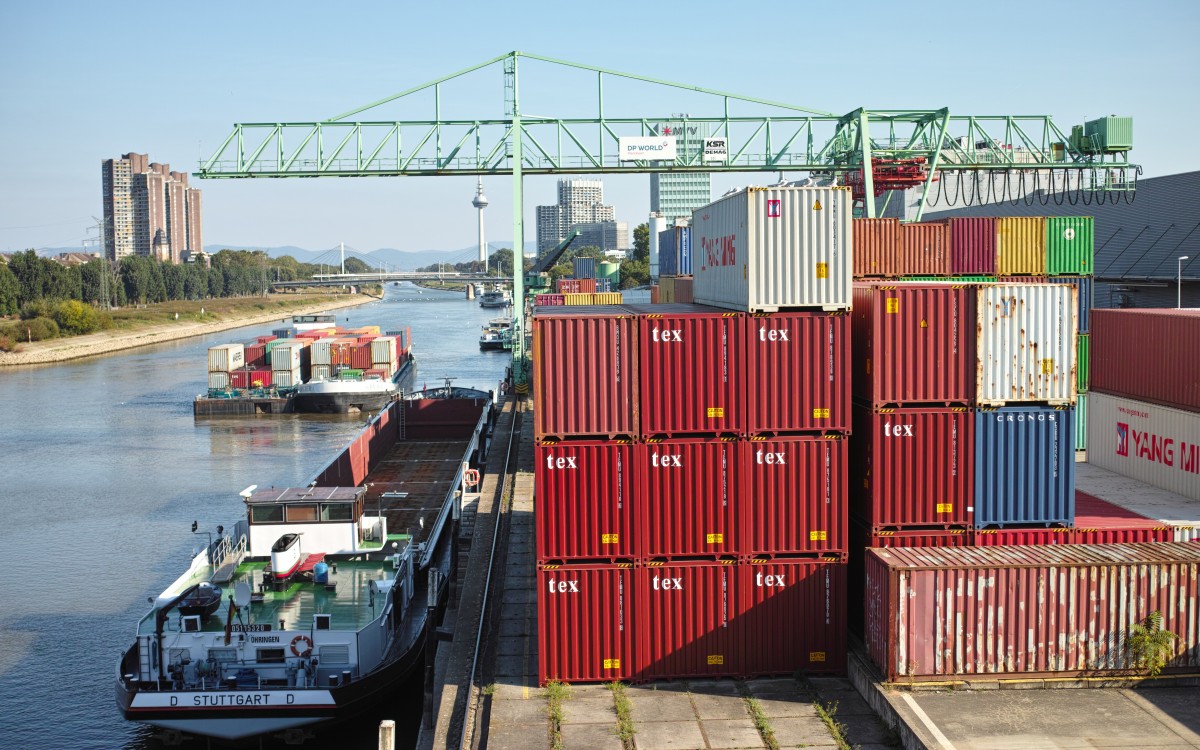Economic effects of adapting critical infrastructure (sea port and inland water transport)

The case study will focus on the port of Hamburg and the port of Mannheim, and actors using the ports.
Case content Introduction
In addition to handling goods, the Port of Hamburg is site for industrial production and raw material processing, and is currently the largest inner-city urban development project in Europe. The port of Mannheim is one of the most important and largest inland ports in Europe, and is home to numerous large companies in sectors such as energy, chemicals and pharmaceuticals.
By the end of 2020, the Mannheim part of the study has reached a first milestone. Two impact chain workshops have been conducted as participative online events. One workshop investigated the risk of extended periods of heat on the population of Mannheim and vulnerable groups. Stakeholders have been the professional firefighters of Mannheim and several offices of the City of Mannheim municipality. The second impact chain workshop was a multi-threat, multi-stakeholder workshop. The participants investigated the risk of more frequent and longer summer periods of drought and low water of the river Rhine on the infrastructure of Mannheim. The Mannheim port authority, the Mannheim large fossile power plant, a logistics company, a company producing products based on pulp, and the City of Mannheim contributed to creating a qualitative impact chain. In both cases, the starting point was the German national set of general impact chains as published in 2016. For the Mannheim cases, the relevant parts have been selected and then refined. The planned next step of the case study will be the identification of possibilities for further quantitative analyses."
Case content
"1) Investigating environmental and economic effects of repeated long periods of low water of the river Rhine, Europes most important inland waterway, on industry supply chains. For the case study we have selected the Rhine port of the city of Mannheim and included industrial and public stakeholders who make use of the port facilities.
2) Investigating environmental and economic effects of repeated periods of low water of the river Elbe on the logistics of Hamburg Sea Port and on supply chains.
In both sub-cases we plan to assess the risk, the potential damages, the potential cost of damages and the potential cost of adaptation measures to infrastructure (waterways, supply chains, inland water transport, etc.). In addition we apply and improve IC methods for creating a basis for effectiveness assessment of adaptation measures.
Comments:
Both sub-cases have transborder aspects. "
Research Innovations
"Improved methods for analysing cascading impacts of climate-related hazards
Improved assessment of economic and environmental consequences
Methodological basis for cost-effectiveness assessment of infrastructure"
Study areas
Environmental and economic effects of repeated periods of low water of the river Elbe on the logistics of Hamburg Sea Port and on supply chains. In analogy, effects of low water of the river Rhine on the Rhine harbor of Mannheim and logistics, infrastructure, and supply chains in the Mannheim metropolitan region. Assessing the risk, the potential damages, the potential cost of damages and the potential cost of adaptation measures to infrastructure (waterways, supply chains, inland water transport, etc.).
Stakeholders involved
"1) Inland port at the river Rhine (Rhein-Neckar Hafengesellschaft Mannheim, owned by the federal state), climate adaptation office of the city of Mannheim and other city offices, Large Power Plant (Großkraftwerk Mannheim), Contargo (Logistics company), Essity (producer of paper-based household products)
Intended:
2) Hamburg Port Authority; customers of Hamburg Sea Port"
Summary data collection
Mix of existing data, freely available data to be acquired (climate, forecasts, economic data), local data of stakeholders (might be - and remain - private)
Expected results
"1) Added value for stakeholders: better understanding of the risk of extended periods of low water of major European / German inland waterways on the supply chains based on the Sea Port Hamburg and inland harbours on the Rhine
2) Methodological improvements: improved consequence analysis, improved cascading effects analysis
3) Good practices in stakeholder training, co-production of knowledge, and presentation of results"
Case study responsible
Fraunhofer-Gesellschaft zur Förderung der Angewandten Forschung (FhG)
